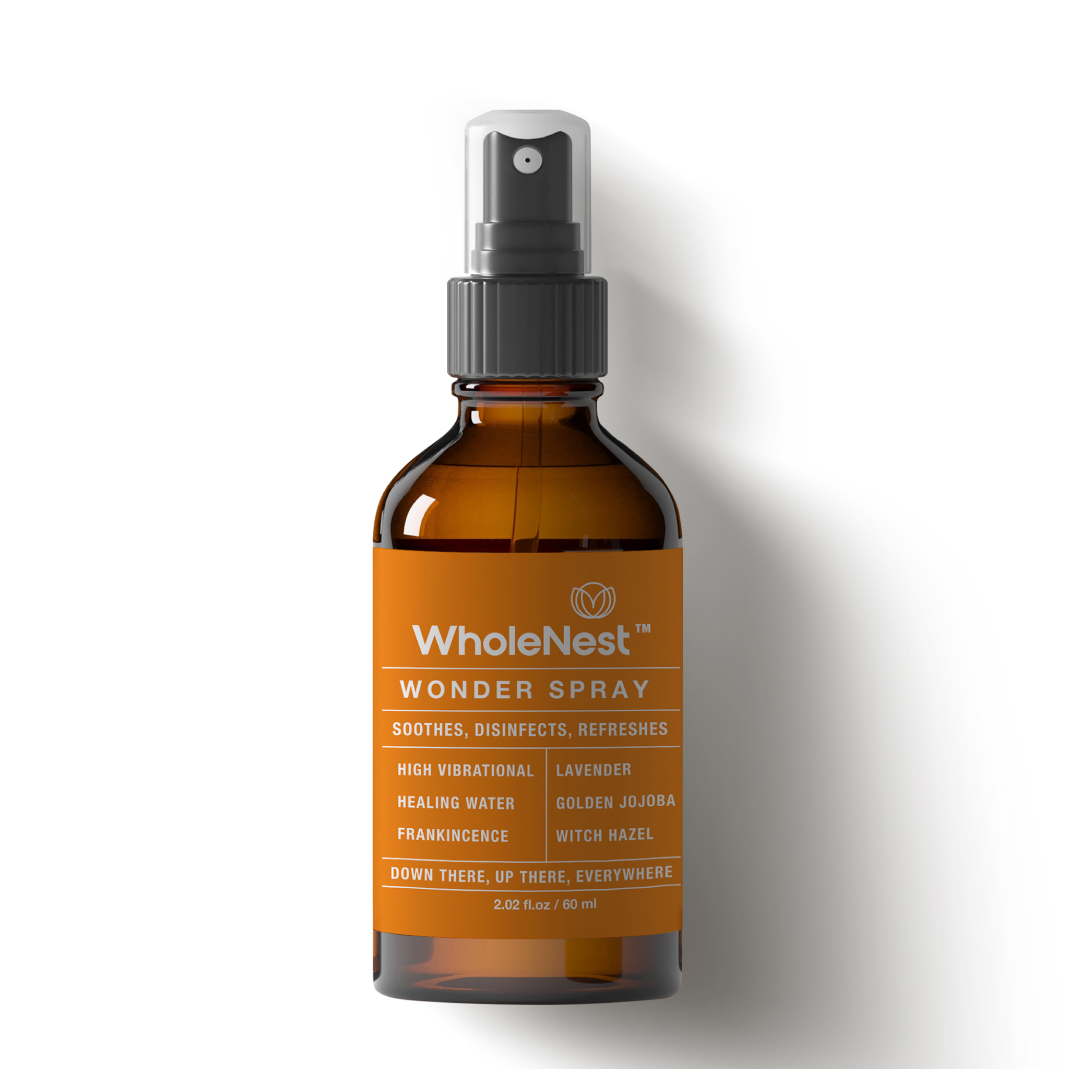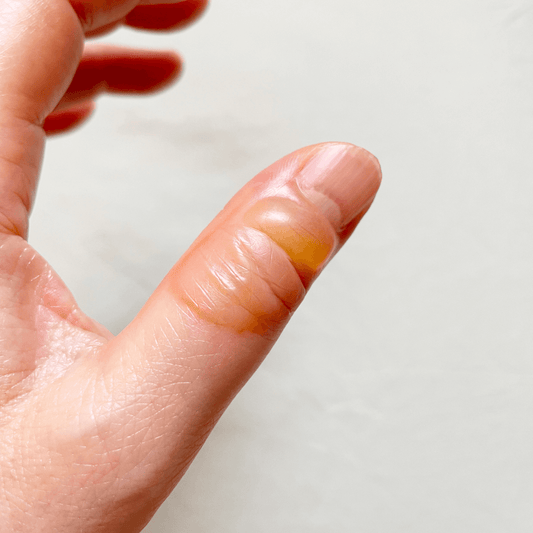|
TABLE OF CONTENT 2. Does perineal massage really help with labor pain and delivery? 3. Benefits of Perineal Massage 4. Timing for Perineal Massage |
1. What is Perineal Massage?
What exactly is perineal massage? Well, it's all about giving some love and attention to the area called the perineum.
Where is the perineum?
The perineum is that little patch of skin between your vagina and your anus. It's kind of like the stretchy bridge that connects the two areas. So, when we talk about perineal massage, we're talking about giving this area a gentle massage to help it get ready for the big day—birth!
Think of it as a warm-up routine for your body before the main event. By giving your perineum a massage, you're helping it become more flexible and stretchy, which can actually make childbirth a bit easier. Plus, it might even help reduce some of the discomfort during labor. So, it's basically like giving your body a little extra support and prep work for the big moment.
2. Does perineal massage really help with labor pain and delivery?
There is some evidence that perineal massage may help to reduce pain during labor and delivery, and may also help to prevent tears in the perineum. However, more research is needed to confirm these benefits.
But hey, don't let that discourage you! Many moms swear by perineal massage and say it made a real difference for them during childbirth. Now, I'm not saying perineal massage is some kind of miracle cure-all. Every mom and every birth is different, so what works for one might not work for another. But hey, if there's a chance it could make things a little smoother down there, why not give it a try? Plus, it's a great excuse to explore your body and sneak in a little self-care time amidst all the chaos of pregnancy and preparing for baby's arrival.

3. Benefits of Perineal Massage
Now let's talk about the perks of adding perineal massage to your pregnancy routine. Trust me, there's more to it than just a relaxing massage session (though that's definitely a bonus!). Here are some of the awesome benefits you can look forward to:
- Reducing Pain During Labor and Delivery: Yep, you read that right! Perineal massage can help ease some of the discomfort that comes with pushing out your little one. It's like giving your perineum a little extra love and support during the toughest part of labor.
- Preventing Tears in the Perineum: By giving your perineum a little extra love and attention with massage, you're helping it become more flexible and less likely to tear during childbirth. It's like giving your body a preemptive hug!
- Shortening the Second Stage of Labor: Who doesn't want to speed things up a bit? Perineal massage has been linked to shorter second stages of labor, meaning you might spend less time pushing and more time snuggling your new arrival.
- Decreasing the Need for Episiotomy: Nobody likes the sound of a surgical incision down there, right? Perineal massage can help decrease the likelihood of needing an episiotomy, a surgical incision made to enlarge the vaginal opening during childbirth.
- Reducing the Risk of Jaundice for Baby: By promoting a smoother, less traumatic birth experience, perineal massage may help reduce the risk of jaundice in newborns. Talk about a win-win for both mama and baby!
- Boosting Baby's Immune System: Perineal massage might just give their immune system a little boost, helping them fight off germs and stay healthy from day one.
- Promoting Bonding Between Mom and Baby: Last but not least, perineal massage can be a beautiful opportunity to connect with your baby before they even arrive. It's a chance to slow down, focus on your body, and bond with the little miracle growing inside you.
Perineal massage isn't just about pampering yourself—it's about setting yourself up for a smoother, more comfortable childbirth experience and giving your baby the best start possible.
So, how often should you be getting your massage on? Well, that's totally up to you. Some mommies like to make it a daily ritual, while others prefer every other day. The key is to find a schedule that works for you and stick with it.
4. Timing for Perineal Massage
So, when should you start busting out those massage moves? Well, Perineal massage should be started at least 4 weeks before your due date. Some mommies like to do it daily, while others prefer every other day. Honestly, it's all about finding what works best for you and your body. Consistency is key. The more you massage that perineum, the more you're helping it get ready for childbirth.
If you're not sure how to get started or need a little extra guidance, don't hesitate to reach out to your healthcare provider or childbirth educator. They'll be more than happy to give you the lowdown on all things perineal massage and help you feel confident in your massage skills.

5. How to Perform Perineal Massage
Perineal massage might sound a bit intimidating at first, but trust me—it's easier than you think. So, let's break it down step by step:
- Wash Your Hands: Before you get started, make sure to wash your hands thoroughly with soap and water. We want to keep things clean down there!
- Grab Some Lubricant: Next up, grab yourself a little bit of oil or lubricant. You want something that's gentle and won't irritate your skin. Coconut oil or vitamin E oil are popular choices, but feel free to use whatever works best for you.
- Get in Position: Find a comfy spot where you can relax and get into a position that allows easy access to your perineum. You might find it helpful to prop yourself up with some pillows or cushions for support.
- Start Massaging: Place your thumbs on either side of your vaginal opening, about an inch (2.5 cm) below. Gently press down and outward, creating a "U" shape with your thumbs as you massage the perineum. Think of it like you're gently stretching and opening up the area.
- Take It Slow: As you massage, remember to take it nice and slow. You want to apply gentle pressure and avoid any sudden movements that could cause discomfort.
- Repeat as Needed: Keep massaging for a few minutes, or until you start to feel a slight stretching sensation. If at any point you experience discomfort or pain, ease up and take a break.
- Clean Up: Once you're done, be sure to wash your hands again with soap and water to remove any excess oil or lubricant. You can also apply Wonder Spray to refresh the area.
It might feel a little awkward at first, but trust me, your body will thank you for it later. So go ahead, give it a try and see how it feels. Remember, consistency is key, so try to make this a regular part of your routine leading up to childbirth. Don't be afraid to enlist the help of your partner if you need an extra set of hands. Your perineum will thank you for it later, trust me!
6. Give your perineum the attention it deserves.
It takes a little time, some lubrication, and a willingness to give your perineum the attention it deserves. For every mom the experience is unique. What works for one might not work for another, and that's totally okay! The important thing is that you're taking the time to listen to your body, nurture yourself, and prepare for the incredible journey ahead.
Whether perineal massage becomes your new favorite ritual or just a small part of your birth preparation toolkit, know that you're making a positive difference for yourself and your baby. So go ahead, give it a try, and see how it feels for you. And remember, if you ever have any questions or concerns along the way, your healthcare provider is always there to offer guidance and support.





